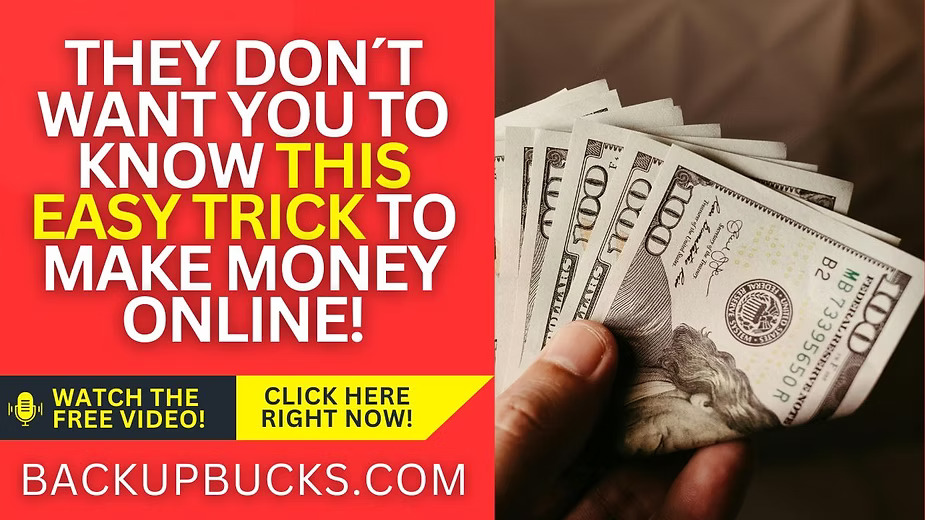Leased Ad Space
How To Generate Affiliate Income With Webinar Funnels
Published by Tom Lindstrom — 10-14-2025 03:10:41 AM
How to generate affiliate income with webinar funnels is something I first stumbled into by accident. I was running webinars to sell my own digital products—coaching, courses, etc.—when I realized I could slot in affiliate offers within the presentation, and I started earning extra revenue without creating new products.
Over time, that accidental extra income became a core part of my business. In this guide, I’ll walk you—step by step, from zero to a working funnel—so you can replicate the same process, avoid my mistakes, and scale steadily.
Table of Contents
Why webinar funnels make sense for affiliate marketing
Core components of an affiliate webinar funnel
Choosing the right affiliate offers
Creating a webinar that converts (content, structure, delivery)
Driving traffic into your webinar funnel
Automated sequences and follow-up strategies
Tracking, optimization, and scaling
Real-world mini case studies
Pros and Cons of this approach
Final summary and action plan
Let’s dive in together, and by the end you’ll see how to generate affiliate income with webinar funnels in a way that feels natural and sustainable.
1. Why webinar funnels make sense for affiliate marketing
When most people hear “affiliate marketing,” they imagine blog posts, comparison pages, or email campaigns. I used to think the same. But webinars offer something different: engagement, trust, and the power of a presentation that keeps people hooked for 60 to 90 minutes. A webinar gives you the chance to teach, provide value, address objections live, and guide people toward a recommendation—all in one experience.
In my first webinar where I introduced an affiliate software tool, I had maybe 150 people show up. Even with a modest conversion rate (2–3 %), I made more in affiliate commissions during that single session than from a week of blog posts promoting the same product.
Over time, as my webinar list grew, I started running evergreen (automated) versions so I didn’t have to manually present every time. That’s how affiliate income became a steady, passive (or semi-passive) stream for me.
Another reason webinar funnels stand out is control. You can design the entire flow: from how people land, to what they see, to follow-up emails, to the pitch inside the webinar. Unlike banners or banner blindness, a webinar lets you guide people’s attention, build authority, and make that affiliate recommendation feel like a natural conclusion of valuable content.
2. Core components of an affiliate webinar funnel
A webinar funnel (affiliate version) consists of several essential parts, each of which you must build thoughtfully:
A registration / opt-in page where people sign up for the webinar.
A thank-you/confirmation page that sets expectations and delivers reminders.
The webinar presentation itself—whether live or automated.
A pitch or affiliate offer inside the webinar.
Live / automated Q&A, bonuses, scarcity, or urgency elements, integrally woven into the presentation.
A post-webinar follow-up email sequence to catch those who didn’t purchase immediately.
Traffic sources to drive people into the registration page.
Analytics, tracking, and optimization to measure conversions, drop-offs, and tweak accordingly.
You can think of it as a pathway: someone sees your ad or content → lands on a sign-up page → attends the webinar → is pitched an affiliate product → some buy, some don’t → follow-up sequences aim to convert those who hesitated. Each stage must be carefully designed and tested.
3. Choosing the right affiliate offers
One of the first big mistakes I made was choosing any affiliate product that paid well without caring whether it matches my audience. That backfired: lower trust, more refunds, fewer conversions. Over time, I settled on three criteria I always use now when selecting an affiliate offer for a webinar funnel.
a) Relevance to your audience
If your audience signed up for a webinar about “how to grow an online course,” then pitching a fitness supplement will feel disjointed. The affiliate offer should ideally be tightly aligned with the topic of your webinar.
b) Quality, reputation, and support
You want an offer from a company you trust—solid product, good customer service, and refund policies. If your attendees have bad experiences, they’ll blame you, damaging your reputation. I once promoted a tool that had frequent bugs. Though I made decent commissions, the complaints landed in my inbox and eroded trust. Lesson learned.
c) Commission structure and rules
Look for recurring commissions, decent payout rates, and clear rules around zero affiliate restrictions (for example, whether you can use your own funnel materials). Some companies prohibit giving bonuses; others allow it. You’ll want clarity so you can run your funnel without fear of violating affiliate TOS.
Once I evaluated dozens of offers in my niche, I picked one with a 30 % recurring commission model and no restriction on webinar funnels. Because I’d built a strong list, that became one of my most dependable monthly revenue streams.
4. Creating a webinar that converts (content, structure, delivery)
A good webinar isn’t just about the pitch—it’s about delivering real, actionable value so that people feel compelled to believe you, trust you, and see how your recommendation solves their problem.
a) Structure your presentation with care
A formula I’ve used—and taught others—is: Hook → Story / Connection → Teach three major points → Transition → Pitch.
Start with a compelling hook: “In the next 60 minutes you’ll discover how to double your email list in 30 days without paid ads.” Then connect via your story (why you’re credible). Then teach three solid strategies or steps—these must be real actionable content. After the last strategy, you transition: “Now, if you want to go deeper, use exactly the tool I’ve been using…” and move into your pitch.
Within the pitch, weave in social proof, demos, bonuses, offers, scarcity, and urgency. But do not make it feel like a hard sell. You’re recommending something that naturally follows from the value you’ve just delivered.
b) Add Q&A, interactivity, and objection handling
During live webinars, I always pause for objections. I say things like, “I know some of you might be thinking, ‘Will this tool work in my niche?’ Let me address that…” and I answer those live. That dramatically increases trust.
If you're using automated (evergreen) webinars, you can simulate that by inserting “common objection” slides, or pre-recorded Q&A segments, or “pause” moments where you address objections in advance.
c) Tone, pacing, and engagement
Speak conversationally, as if you were teaching a small group. Use examples and stories. Don’t rush through slides; leave breathing room. I have a habit: I always include a mini case study in each of the three teaching points, saying “Here’s a client of mine who used this exact idea…” That helps ground abstract concepts in reality.
d) Webinars live vs automated
Live webinars give you spontaneity, live objections, energy, and often better attendance rates. They require you to host at a scheduled time, which can limit scalability. Automated or evergreen webinars run 24/7 and allow you to scale more easily, but require more upfront work (recording slides, objections handled in advance, ensuring replay-like experience). In my business, I use a hybrid approach: monthly live webinars and, in between, run an evergreen version with minor updates.
5. Driving traffic into your webinar funnel
Even the best webinar funnel won’t convert if no one sees it. Traffic is the lifeblood. For beginners, I often start with a mix of organic plus paid—because it speeds up the feedback loop.
Organic traffic strategies
One tactic I love is content-to-webinar. That is, you publish a blog post, podcast, video, or social media thread teaching a subset of your webinar content, and at the end you invite the audience to register for the full webinar. Over time, your free content builds SEO, shares, and organic momentum—but also feeds the funnel.
For example, I published a blog post titled “3 Ways I Grew My List to 5,000 in 90 Days,” and at the end I said, “If you want the full framework I used, join my free webinar.” That post alone generated dozens of webinar signups per month.
Another organic method is partnerships or joint webinars: invite someone in your niche with a built-in audience, co-host a webinar, and promote it to their list (for a revenue split or affiliate arrangement).
Paid traffic strategies
Paid ads accelerate things. Traffic Authority, Facebook/Instagram, YouTube, and native platforms like Google Ads or LinkedIn (depending on your niche) are common choices. When running ads, send people to your registration page—not directly to the affiliate link. The registration page acts as a buffer, warming them to you and boosting conversions.
In my experience, start small: run a €10–€20 per day campaign to test creatives and copy. Track your cost per registration, cost per attendee, and ultimately cost per sale. Once you find winning ads, scale carefully.
I once spent €200 on ads in a week, got 100 webinar registrations, 40 attendees, and 3 sales. The ROI wasn’t perfect yet—but it gave me real data to optimize from. That early data was pure gold.
6. Automated sequences and follow-up strategies
Many people who register never attend live. Also, even among attendees, not all will purchase during the webinar. That’s where your post-webinar follow-up email (and sometimes SMS or retargeting) sequences come in.
a) Pre-webinar reminders
After someone signs up, send reminders: one the same day, another a few hours before, and one just before. Reminders help reduce no-shows. I typically build in a “Why this matters” message with a teaser to build anticipation.
b) Post-webinar replay emails
Whether your webinar is live or automated, send replay links to those who missed it or want to rewatch. Use subject lines like “Replay available: you asked—here’s the answer.” In these emails, restate some urgency (“This replay disappears soon”) and re-pitch the affiliate offer, maybe with an added bonus to nudge conversions.
c) Objection-handling emails
Over the next few days, send emails addressing specific objections people might have had (e.g., “Is this for beginners?”, “How do I know it will work for me?”, “What if I can’t afford it now?”). In each email, remind them of your story, social proof, and benefits, and link them again to the offer or to ask questions.
d) Scarcity and deadline emails
If your affiliate partner provides a coupon, bonus, or limited-time offer, leverage countdown timers and scarcity. Emails like “Last chance—offer expires tonight” can boost urgency. Use clear calls to action and reminders that the window is closing.
e) Retargeting and remarketing
If someone visited the registration page but didn’t register, run retargeting ads to bring them back. If someone registered but didn’t attend, retarget them with a replay ad. If someone attended but didn’t buy, retarget them with offer-focused ads or reminders.
All these layers help you recapture value at each point of the funnel.
7. Tracking, optimization, and scaling
Once your funnel is live and earning, your job shifts to measuring, optimizing, and scaling.
a) Key metrics to watch
You want to track registration rate (percentage of people who see the registration page and sign up), attendance rate (percentage of registrants who show up), conversion rate (percentage of attendees who purchase), and overall ROI (revenue minus ad or traffic cost). Also watch email open rates, click rates, and dropout points in the webinar (where people typically leave).
b) A/B testing
Test headlines, registration page copy, webinar titles, slide designs, order of teaching points, pitch structure, and email subject lines. Change one variable at a time so you isolate what moves the needle. I once increased conversions by 40 % simply by changing a registration page headline and adding a short video.
c) Scaling your ad spend
Once you find ad creatives and funnel settings that convert profitably, increase your spend gradually—say by 20–30 % per week rather than doubling overnight. Monitor whether conversion rates hold. If they drop, revert to the previous budget and test new creatives first.
d) Updating content
Over time, update your webinar slides, examples, and affiliate offers so things don’t go stale. Every 3–6 months I revisit my evergreen webinar, refresh the non-sales portions, swap in new case studies, and re-record the pitch if I change the affiliate product or bonus structure.
8. Real-world mini case studies
Let me share two short real-life examples from my experience and from students I’ve coached.
Case Study A: Side-hustler to steady affiliate income
Emma was a freelance graphic designer. She built a small email list by giving away a free “10-element branding checklist.” She then ran a webinar called “How to Design a Brand that Sells.”
In the webinar, she taught three design tips and then pitched an affiliate brand kit software tool. In her first webinar, 80 people signed up, 45 attended, and she sold to 3 of them at €99 each—generating ~€300. Over three months, she refined her webinar, added email sequences, and now does evergreen webinars that bring in €1,200–€2,000 per month in passive affiliate revenue.
Case Study B: Software founder using affiliate funnel as traffic generator
A SaaS founder (we’ll call him Martin) didn’t want to overspend on ads. Instead, he created a webinar titled “How to Automate Client Onboarding in 30 Minutes” and included a third-party tool (affiliate) that complemented his software. He ran the webinar live monthly, then turned it evergreen. Even though his core product was something else, the affiliate funnel acted as a lead generator and cash stream. Over six months, he earned a modest but consistent monthly affiliate income, which he reinvested into growing his core product.
These stories show that whether you’re an independent creator, freelancer, or product-based entrepreneur, you can build a real income stream this way.
9. Pros and Cons of using webinar funnels for affiliate income
Below is a frank, reader-friendly look at the main opportunities and pitfalls:
Pros
You build trust and authority because the webinar lets you teach, connect, and showcase your expertise.
Your conversion rates tend to be higher than passive content or banner ads, since attendees are warmed and engaged.
A well-built webinar can be automated, giving you a more passive or semi-passive income stream.
You control every part of the funnel—traffic, messaging, delivery, follow-ups—so you can optimize.
You can leverage others’ products without creating your own, yet still brand the experience as yours.
Cons
Initial setup is time-intensive: writing slides, recording, mapping email sequences, crafting ads, testing.
If traffic costs are high, you may bleed money during the testing phase until you find winning combinations.
The affiliate product changes, commission rates shift, or the company’s policies change—all of which can impact your income.
Technical issues (webinar software, email deliverability, landing page glitches) can sabotage your funnel if not monitored.
Audience fatigue or declining novelty: over time, a funnel becomes stale without updates, so you need continual refreshes.
In plain terms: the upside is compelling—higher conversions, authority, scalable passive income. The downside is that it requires hands-on work, testing, and maintenance. But if you’re willing to invest those early hours, the returns are often worth it.
10. Final summary and action plan
Congratulations, you’ve now got the full blueprint for how to generate affiliate income with webinar funnels. Let’s recap the most important takeaways and give you an action plan you can act on today.
First, the power of webinars lies in their ability to engage, build trust, and convert. That’s what makes them a compelling tool for affiliate marketing. Second, you need every component: a persuasive registration page, a well-structured webinar, the right affiliate offer, traffic, follow-up sequences, tracking, and optimization. Third, choose offers that align with your audience and reputation; avoid jumping around randomly. Fourth, start small with traffic, measure everything, and scale slowly. Fifth, treat your webinar as a living system—update content, refresh slides, re-test emails.
Action Plan (First 30 Days):
Day 1–5: Pick your niche, define your target attendee, and select an affiliate offer that fits.
Day 6–10: Draft your webinar outline (hook, three teaching points, transition to offer).
Day 11–15: Create slides, record your webinar (live or evergreen version).
Day 16–20: Build your registration page and confirmation pages; set up your email sequences (reminders, replay, objection emails).
Day 21–25: Test your funnel with low-budget traffic—organic and paid. Collect initial data.
Day 26–30: Analyze results, tweak headline or copy, improve retention, and scale the ad spend a bit if you see positive ROI.
If you follow this sequence, you’ll have a live webinar funnel promoting an affiliate offer within a month—and that’s enough to start earning real income. Over time, refine, scale, and replicate with other offers.
Remember: the goal is not just to push sales, but to deliver value first, so your recommendation feels natural and earned. If you do that well, people will trust your suggestions—turning your webinar funnel into a consistent revenue engine.
With this guide, you know how to generate affiliate income with webinar funnels—and, more importantly, how to do it in a way that’s sustainable, high integrity, and scalable. Start small, iterate, and grow. You’ve got this.
About Tom Lindstrom
Hey there! I'm Tom, and I've been working online for quite some time now. If you're searching for a great place to advertise your business, I highly recommend LeasedAdSpace—it's been an amazing resource for me. If you’d like to explore a simple, proven way to earn automatic affiliate commissions, take a look at BackUpBucks.com—you might find it really valuable!





